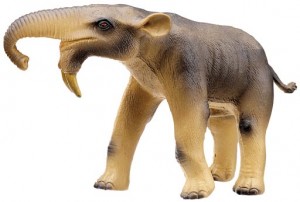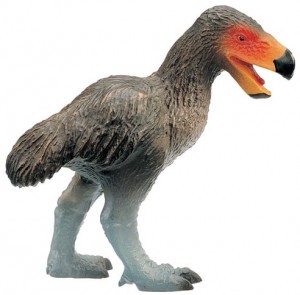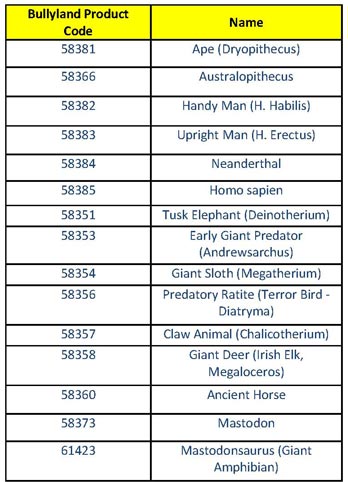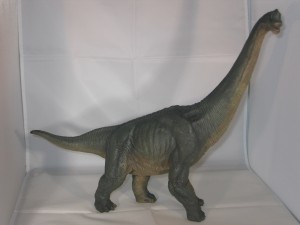Everything Dinosaur Announces Rare Bullyland Models Soon to be in Stock
Rare Prehistoric Mammals and the Ascent of Man Series Soon to be Available
Team members at Everything Dinosaur are pleased to announce that negotiations with Bullyland, the Germany-based figure and model manufacturer have been concluded successfully and the UK-based dinosaur company will soon be getting a range of rare Bullyland prehistoric animal models and early human figures into stock.
Bullyland Prehistoric Animal Models
Over many years, Bullyland have built up a substantial back catalogue of prehistoric animal models, including Mastodons, Chalicotheres, Deinotherium, Woolly Rhinos, Ancient Horses, Irish Elk and Terror Birds. Customers of Everything Dinosaur will soon be able to get their hands on these rare, hand-painted models. However, these models will only be available for a limited period.
The Bullyland Deinotherium – Back from Extinction
Picture credit: Everything Dinosaur
Everything Dinosaur’s museum contacts informed them that Bullyland was going to produce a small run of its retired prehistoric animal and human figures for sale within the German museum market. However, thanks to the company’s close relationship with Bullyland and its expertise in the field of prehistoric animal figures, Everything Dinosaur is to be supplied with a limited stock of the models.
A spokeswoman for Everything Dinosaur stated:
“We are delighted to see a number of the previously retired Bullyland models come back. These once extinct replicas so sought after by collectors are now available once again.”
However, it was pointed out that a number of enthusiasts and collectors had already placed orders with Everything Dinosaur, so the spokesperson added:
“This is really an exciting opportunity for collectors to get hold of some extremely rare models, we suspect that demand is going to outstrip supply for a number of replicas, so it is going to be a case of first come, first served.”
Model collectors can contact Everything Dinosaur, and express their interest in prehistoric animal replicas including the Bullyland prehistoric animal models by emailing the company: Email Everything Dinosaur.
Models can then be reserved and the customer contacted when the shipment arrives (scheduled to be available by mid June).
Predatory Ratite – Terror Bird Makes a Welcome Return
Picture credit: Everything Dinosaur
It is not just prehistoric animals that are being re-introduced, the famous and almost mythical “evolution of mankind” series of models is also going to be available. This series featured six hominin models that portrayed the evolution of our own species. The first model is a replica of the ape Dryopithecus, this is followed by an Australopithecine, Homo habilis, Homo erectus, a Neanderthal and concluding the set a replica of a modern man, referred to by Everything Dinosaur staff as the “Clovis Man Replica”.
The Ascent of Man Series that is Going to be Available
Picture credit: Everything Dinosaur
The models are due to arrive week commencing 11th of June, model collectors are urged by Everything Dinosaur to get in contact quickly to avoid disappointment. These rare hominin figures and prehistoric animals will only be available for a short time and in small quantities.
The List of Rare Bullyland Replicas soon to be Available from Everything Dinosaur
Table credit: Everything Dinosaur
As if all these models was not excitement enough, Everything Dinosaur have one more surprise hidden away in the geology ruck sack. The company has been able to secure a limited stock of the exceptionally rare Bullyland Mastodonsaurus model.
Bullyland Mastodonsaurus Model
Picture credit: Everything Dinosaur
Mastodonsaurus was a large-headed, giant amphibian belonging to the temnospondyl clade. It lived in the Triassic and some species grew to the lengths of modern-day caiman. A fierce predator, it is great to see a model of this prehistoric animal available once again. An example of an creature thought to be extinct, coming back from the dead perhaps?
To view the range of Bullyland prehistoric animal figures currently in stock at Everything Dinosaur: Bullyland Prehistoric Animal Models.







